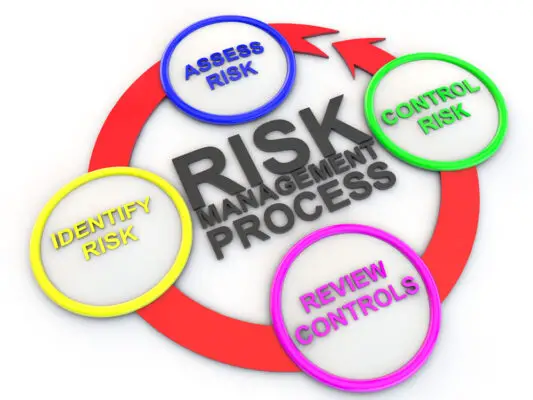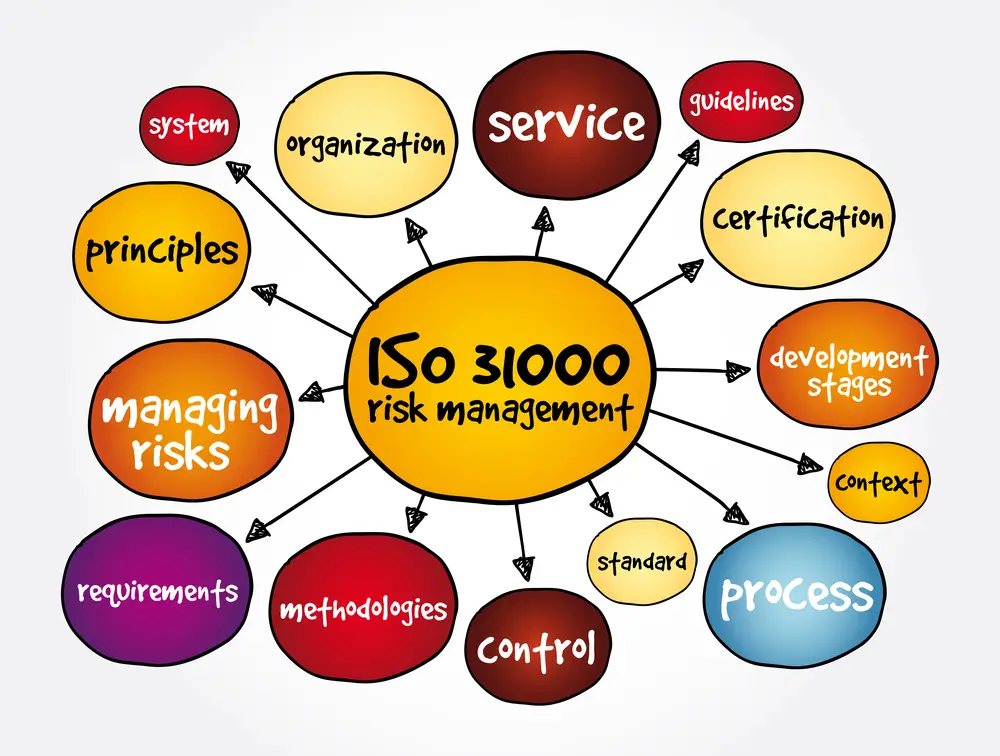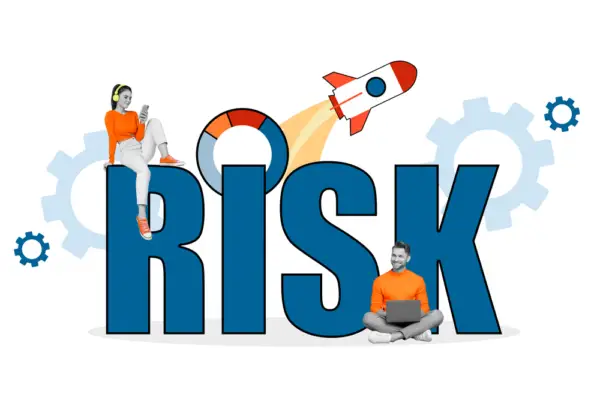Risk management is a critical aspect of any organization’s success. A well-structured risk management framework helps organizations identify, analyze, and mitigate potential threats and uncertainties that could hinder the achievement of their objectives.
Two popular risk management frameworks – ISO 31000 and COSO ERM – are often at the center of discussions when selecting the best framework for an organization and its risk appetite.
The ISO 31000 and the COSO ERM Frameworks are two of today’s most widely used risk management frameworks. As a business owner, understanding the differences between them can help you decide which framework to use for the risk management process in your company and risk management capabilities.
In this blog post, we will explore the similarities and differences between these two approaches and provide a comprehensive comparison to help you make an informed decision depending on your risk tolerance and appetite.
Let’s take a closer look at both frameworks so that you can make an informed decision.

The ISO 31000 Framework
The ISO 31000 Risk Management Framework is an international standard developed by the International Organization for Standardization (ISO). This framework provides guidance on how organizations should identify, assess, manage, and communicate risks associated with their operations.
This framework aims to provide organizations with guidelines for developing their own risk management processes to effectively manage and reduce potential risks. It also encourages organizations to develop a risk culture in order to facilitate effective communication and collaboration across all levels of the organization.
COSO ERM Framework
The COSO acronym translates to the Committee of Sponsoring Organizations. In 1985 five professional organizations were incorporated into this organization. COSO was developed in 1992 and has since been updated in 2013.
This changed in 2017 into the COSO e-risk management framework for enterprises. The cube is usually represented as a three-dimensional cube The cube shows how COSO combines its 3 elements; business objectives at the top, the components at the rear, as well as organizational structures at the side.
The COSO framework was the first to be written in 2004. In 2017, the document was revised to address the increasing complexity of ERM. This updated report highlights the importance of taking into account risks when developing business strategies and managing operations. Those who use the ERM framework have access to the framework across a wide range of industries.
The Committee of Sponsoring Organizations (COSO) Enterprise Risk Management (ERM) Framework was released in 2004. This framework focuses on helping organizations identify, assess, control, and monitor strategic risks associated with their operations.
It emphasizes understanding the interdependencies between various organizational activities and processes to ensure that all levels of the organization work together toward achieving common goals.
The COSO ERM Framework also provides detailed guidance on how organizations should implement effective internal controls to reduce potential risks associated with their operations.
COSO’s framework focuses on the reduction of risk in businesses and improving operations. It has since been updated for 2018 to address the increasing complexity of ERM processes and improve the processes for managing risk. Largely used by internal auditors for its internal control framework.
In addition to the revision is the emphasis on strategic and operational risks in the business strategy decision process. It is applicable to many different companies and industry sectors, it says. It provides a complete approach to managing risk within an enterprise. In order to achieve strategic objectives, organizations must understand and manage risks.
Overview: ISO 31000 and COSO ERM( Enterprise Risk Management)
ISO 31000 is an internationally recognized standard for risk management published by the International Organization for Standardization (ISO). It provides a comprehensive set of principles, guidelines, and processes that can be applied to any organization, regardless of size or sector.
The main objective of ISO 31000 is to help organizations integrate risk management into their decision-making processes, providing a systematic approach to managing uncertainty. The coso erm and iso 31000 frameworks sometimes assist in fraudulent financial reporting.
The Committee of Sponsoring Organizations of the Treadway Commission (COSO) developed the Enterprise Risk Management (ERM) Framework to identify, assess, and manage risks across an organization.
The COSO ERM framework is built on a foundation of internal control principles and expands them to cover a wider range of risk management activities.
Similarities between ISO 31000 and COSO ERM
There are some key similarities to the ISO 31000 Risk Management Framework. Initially, the two Frameworks aim to assist companies in identifying risk and managing its impacts.
Another framework emphasizes how important it is to develop tolerance and appetite for risks in an environment of uncertainty. Finally, the framework advocated an integrated risk assessment based on organizational culture, strategy, and structures. Both share a number of similarities, with a purpose in mind.
Both ISO 31000 and COSO ERM are designed to help organizations implement effective risk management processes. They share several key similarities:
Comprehensive:
Both frameworks provide a holistic approach to risk management, covering all aspects of an organization’s operations.
Principles-based:
Both frameworks are based on a set of guiding principles that shape the overall risk management process.
Scalable:
Both frameworks can be tailored to suit organizations of different sizes and industries.
Continuous Improvement:
Both frameworks emphasize the need for continuous improvement and learning to enhance risk management practices.
Differences between ISO 31000 and COSO ERM
The COSO-sponsored committee published the Enterprise Risk Management integrated framework in 2004. These frameworks aim to provide organizations with tools to assess risk.
A different ISO 31000 standard provides guidance on risk management for companies. Although the framework is concerned in terms of minimizing risks, there are several significant differences.
A major difference is that COSO ERM Framework is specifically designed for businesses, and ISO 31000 can be used in any organization.
Despite their similarities, ISO 31000 and COSO ERM have some significant differences: ISO 31000 is an internationally recognized standard and is widely adopted by organizations across various industries and countries.
Its global applicability and scalability make it popular for organizations operating in multiple countries or international supply chains.
COSO ERM, although applicable globally, has its roots in the United States and is more commonly adopted by U.S. organizations. Its usage is more concentrated in regulated industries such as finance, healthcare, and energy and used by financial executives international and management accountants.
Structure:
ISO 31000 is structured around three core components: principles, framework, and process. COSO ERM is organized into five interrelated components: governance and culture, strategy and objective-setting, performance, review and revision, and information, communication, and reporting.
Applicability:
ISO 31000 is an international standard that can be applied to any organization, while COSO ERM is primarily targeted at U.S. organizations, although it is also applicable globally. Certified public accountants and professional associations example certified public accountants institutes have developed documents on embedding risk management in organizations.
Focus:
ISO 31000 focuses on risk management as a standalone process, whereas COSO ERM integrates risk management into an organization’s overall corporate governance, strategy, and performance.
Internal Control:
COSO ERM has a stronger emphasis on both internal and external stakeholders’ control, as it is built on the foundation of the COSO Internal Control–Integrated Framework.
Choosing the Right Framework for risk management process
COSO’s ERM framework is accompanied by ISO 31000 to support organizations in increasing efficiency, reducing costs, and reducing waste. One is not always better than the other; the latter might also be included in securing risk management systems.
Generic risk management standards and generic risk management standard capabilities of the organization on how to manage risk need to be considered.
Therefore, organizations planning to implement ERM should evaluate ISO31000 and COSO to determine which approaches fit the organization’s culture and needs or combine them to meet the needs of the organization. COSO has a complex, multilayered structure which is challenging when implementing it fully.
In selecting the best risk management financial reporting framework for your organization, consider the following factors:
Objectives: Identify your organization’s risk management objectives and select the framework that best aligns risk criteria with them.
Industry: Consider the specific requirements of your industry and whether one framework is more widely adopted or preferred.
Integration: Determine how easily each framework can be integrated with your organization’s existing processes and systems.
Compliance: Assess whether adopting a particular framework will help your organization meet regulatory requirements or industry standards.
Conclusion
Both ISO 31000 and COSO ERM are robust risk management frameworks with unique strengths and characteristics. Ultimately, the choice between these two approaches depends on your organization’s specific needs and context.
Both are widely used risk management frameworks that provide valuable guidance for organizations looking to mitigate potential risks associated with their operations. Ultimately, it’s up to you as a business owner to decide which one best suits your needs.
The key is understanding how each framework works so you can decide which one will work best for your organization. If you understand both frameworks, you’ll be able to make sure that your company is well-equipped to handle any potential risks that may arise during its operations.

Chris Ekai is a Risk Management expert with over 10 years of experience in the field. He has a Master’s(MSc) degree in Risk Management from University of Portsmouth and is a CPA and Finance professional. He currently works as a Content Manager at Risk Publishing, writing about Enterprise Risk Management, Business Continuity Management and Project Management.



